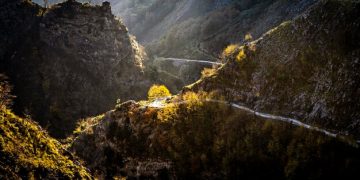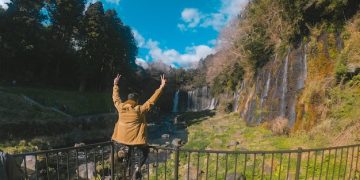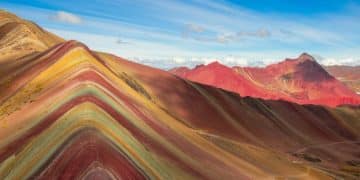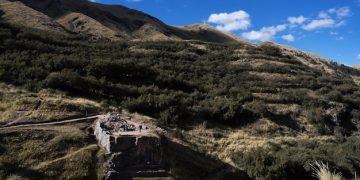Peru Climate Zones: US Traveler’s Packing Guide
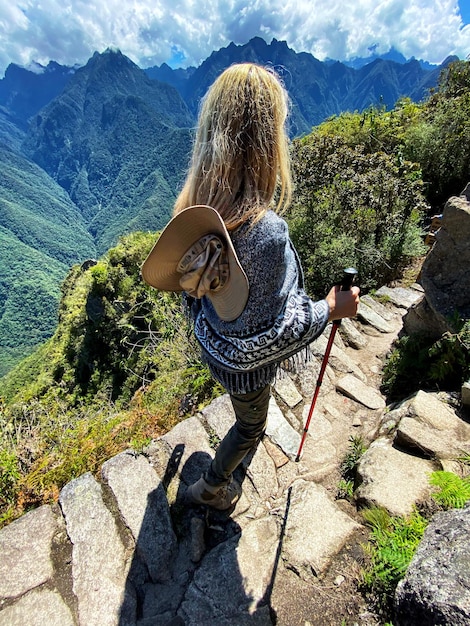
Navigating Peru’s Diverse Climate Zones: A Packing Guide for US Travelers ensures you pack appropriately for the varied conditions, from the arid coast to the humid Amazon and the cold Andes, enhancing your travel experience.
Planning a trip to Peru? The key to enjoying your adventure lies in packing appropriately for its diverse climates. This US traveler’s guide ensures you’re prepared for everything from the desert coast to the lush Amazon and the towering Andes.
Understanding Peru’s Climate Zones
Peru’s climate is incredibly diverse, dictated by its geography. Understanding these zones is the first step in packing effectively. From coastal deserts to high-altitude mountains and rainforests, each requires specific clothing and gear.
Coastal Desert Climate
The coastal region, including Lima, experiences a mild, arid climate. It’s often cloudy and humid, especially during the winter months (June to August). Temperatures range from 60°F to 80°F.
Andean Highlands Climate
The Andes, including Cusco and Machu Picchu, have a cooler, drier climate with significant temperature variations. Days can be warm, but nights are cold. Altitude sickness is a concern, so acclimatization is essential.
Amazon Rainforest Climate
The Amazon region is hot, humid, and wet year-round. Rainfall is abundant, and temperatures consistently range from 70°F to 90°F. Lightweight, quick-drying clothing is crucial.
Successfully packing for Peru means preparing for all three distinct climate zones so you you can enjoy your trip.

Clothing Essentials for All Zones
Regardless of where you’re headed, some clothing items are essential for any trip to Peru. Versatility and adaptability are your best friends when creating your packing list.
Base Layers
Merino wool or synthetic base layers are excellent for temperature regulation. They keep you warm in the mountains and wick away moisture in humid climates.
Versatile Outerwear
A lightweight, waterproof jacket with a hood is crucial. It protects against rain in the Amazon and wind in the Andes. Pack a fleece or insulated jacket for added warmth.
Comfortable Footwear
Sturdy hiking boots are essential if you plan on trekking. For city exploration, comfortable walking shoes are a must. Consider waterproof options to combat unpredictable weather.
- 🧦 Moisture-wicking socks to keep your feet dry and comfortable.
- 🩳 Quick-drying pants that can be converted into shorts.
- 👚 Lightweight, breathable shirts.
These essential items will help give you a good foundation for your overall packing plan.
Packing for the Coast
The Peruvian coast is often shrouded in mist, especially during the cooler months. Here are some specific items to consider when packing for this region.
Layering is Key
The coastal climate can be unpredictable, so layering is essential. A light sweater or cardigan is perfect for cool evenings.
Sun Protection
Even on cloudy days, the sun can be intense. Pack sunglasses, a wide-brimmed hat, and sunscreen. UV protection is critical.
Beach Essentials
If you plan to visit the beaches, bring a swimsuit, towel, and sandals. The water can be chilly, but the sun is often strong.
- ☁️ Lightweight windbreaker for breezy days.
- 🧴 High SPF sunscreen to protect against UV rays.
- 🕶️ Sunglasses to reduce glare.
Packing for the coast requires items that can be readily added or removed depending on the weather. With the correct prep, you can enjoy this climate fully.
Altitude Adaptation in the Andes
The Andes present unique challenges due to the high altitude. Gradual ascents and appropriate clothing can mitigate the effects of altitude sickness.
Warm Layers
Pack thermal underwear, fleece jackets, and a heavy coat. Temperatures can drop dramatically at night. Gloves, hats, and scarves are essential.
Hiking Gear
If you plan to hike, bring sturdy boots with ankle support, trekking poles, and a backpack. Ensure your gear is broken in before your trip.
Altitude Sickness Remedies
Consult your doctor about altitude sickness medication. Pack aspirin or ibuprofen for headaches. Coca tea can also help alleviate symptoms.
- ☕ Coca leaves or tea to help with acclimatization
- 💊 Acetazolamide (Diamox) if prescribed by your doctor.
- 🥾 Sturdy hiking boots for mountain trails.
Adjusting to high elevations will be much easier with a careful packing plan for clothing and medication.
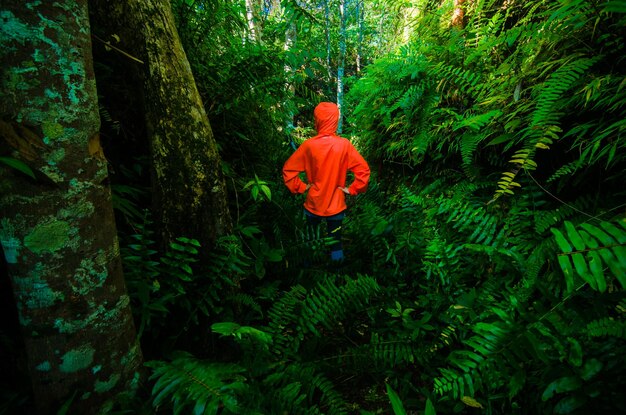
Surviving the Amazon Rainforest
The Amazon rainforest is hot, humid, and teeming with insects. Lightweight, breathable clothing is your best defense against the elements.
Insect Repellent Clothing
Long-sleeved shirts and pants made of lightweight, breathable fabric are crucial. Treat your clothing with permethrin to repel insects.
Waterproof Gear
Pack a waterproof backpack cover, rain poncho, and waterproof bags to protect your belongings from the rain. Waterproof boots are useful for jungle treks.
First-Aid Essentials
Bring insect repellent, antiseptic wipes, bandages, and any necessary medications. A small first-aid kit can be a lifesaver in the jungle.
- 🦟 DEET-based insect repellent to ward off mosquitoes and other bugs.
- 💧 A reusable water bottle to stay hydrated in the humid climate.
- 🔦 A headlamp for navigating in the dark.
The Amazon can be an exciting adventure if you are prepared to handle heat, moisture and bugs.
Gadgets and Gear
Certain gadgets and gear items can enhance your Peruvian experience. Here are some recommendations for tech-savvy travelers.
Power Adapter
Peru uses 220V electricity with Type A and C plugs. Bring a universal power adapter to charge your devices.
Portable Charger
A portable charger ensures your phone and camera stay powered during long days of exploration. Consider a solar-powered option for remote areas.
Camera Equipment
A high-quality camera captures the stunning scenery of Peru. Bring extra batteries and memory cards to document your journey.
- 📷 A versatile camera to capture landscapes and wildlife.
- 🌍 A universal adapter to charge your electronic devices.
- 🎒 A daypack for carrying essentials during excursions.
With preparation and thoughtful planning, you can pack the right gear and gadgets for an outstanding, safe trip to Peru.
| Key Point | Brief Description |
|---|---|
| ☀️ Climate Zones | Peru has coastal, mountain, and rainforest climates. |
| 👕 Clothing | Pack layers for changing temperatures. |
| 🥾 Footwear | Bring hiking boots and comfortable walking shoes. |
| 💊 Health | Pack altitude sickness remedies and insect repellent. |
FAQ Section
▼
The best time to visit Peru is during the dry season, from May to September. This period offers the most predictable weather patterns and is ideal for trekking and outdoor activities.
▼
To avoid altitude sickness, ascend gradually and spend a few days acclimatizing at a lower altitude. Stay hydrated, avoid alcohol, and consider taking altitude sickness medication as prescribed by your doctor.
▼
Use a DEET-based insect repellent to protect against mosquitoes and other biting insects in the Amazon. Apply it frequently, especially during dawn and dusk when insects are most active.
▼
Layering is essential on the Peruvian coast due to varying temperatures. Pack lightweight clothing like sweaters, cardigans, and a windbreaker. Don’t forget sunscreen, sunglasses, and a hat for sun protection.
▼
Peru uses 220V electricity with Type A and C plugs, so bring a universal power adapter. Consider bringing a portable charger to keep your devices powered during long days of travel and exploration.
Conclusion
Packing for Peru’s diverse climates requires careful planning and a versatile wardrobe. By understanding the specific needs of each region and packing accordingly, US travelers can ensure a comfortable and enjoyable journey through this remarkable country.
